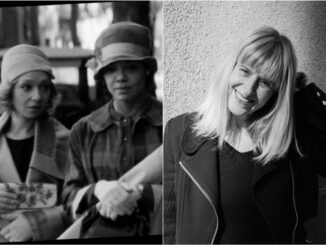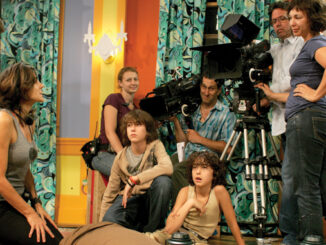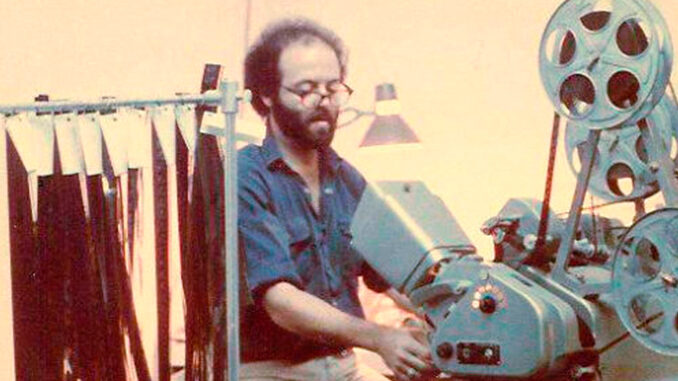
by Patrick Z. McGavin
Paul Hirsch had a direct hand in some of the most iconic moments in American movies—the jump to hyperdrive in “Star Wars” (1977), the climactic car chase in “Blow Out” (1981), the break-in at the CIA vault in “Mission: Impossible” (1996).
Born in New York, Hirsch won an Academy Award for his picture editing on the George Lucas’s iconic “Star Wars.” He has edited more than 40 films, including 11 movies by Brian De Palma, four by Herbert Ross and two by John Hughes.
He painstakingly chronicles the exhilarating highs and more bittersweet lessons of his 50-year career with a new memoir, “A Long Time Ago in a Cutting Room Far, Far Away” (Chicago Review Press, $30).
He gave a recent interview to CineMontage about the book and his legendary career.
CineMontage: What was the genesis of this book?
Paul Hirsch: I was always leery of my writing ability. When I was a kid in school, I always gravitated toward math and science rather than anything involving writing. I spent four years in Paris when I was a kid, and French was practically my first language.
The impetus for the book, about 20 years ago, I was on location for a film in Vancouver. My wife Jane had stayed behind in Los Angeles. I found myself bored and alone on the weekends. I had been visiting the set the previous day and telling some of my stories to good effect.
I thought, I should really write some of these stories down. That’s how it started. I wrote a chapter. I think the first chapter I wrote was about “I Love Trouble” (1994), which happened a couple of years earlier.
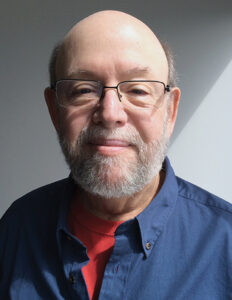
Did you keep journals, diaries, or notes of any kind, especially during your formative period, from the late 1960s up until “Star Wars?”
I did not. These memories were so potent they burned themselves into my memory.
Did you go back and interview some of the principals to make sure your memories corresponded with their own?
No. I did this very irresponsibly. I didn’t do it as a research book. It’s a memoir. In French, that means memory, and this is how I remember it. I am not taking a stance this is all true. It’s true as I remember it.
When I began, 20 years ago, I started to write down all of my stories. I started writing notes [on] things I wanted to write about someday. I wrote down all the anecdotes I could remember. I added to that. I made a list of all of these things I wanted to write about. I started to chip away at that list. Sometimes I’d abandon it for two or three years at a time if I got busy at work. It was not a prime concern.
Over the years, the periods of employment grew shorter, and the periods of unemployment grew longer, as befits a career arc, meaning what goes up must come down. I found myself with more and more time to work on it. Eventually I finished the first draft about two years ago.
Did you revisit the movies you made?
I almost never go back and look at my films. I relied on my memory in writing the book, and in a couple of instances I erred in that regard, but I plan to address these few, small errors in future printings of the book. I have had too much experience by now to think of myself as infallible.
Was the writing done piecemeal or in a more concentrated action?
The periods when I worked on it became longer and longer. At the end it was a concentrated effort to get through my list. As the years went by, I kept adding to the list. It got longer. I ended up with a very long first draft.
My friend Nick Meyer, who wrote “The Seven Percent Solution,” offered to read it. He also said he would edit it. Nick is also the son of a psychoanalyst. His notes, rather than editing, were like, “How did that make you feel,” or “How did you react to that.” These were very helpful notes.
Nick also referred me to his literary agent Charlotte Sheedy—Ally Sheedy’s mother. She instructed me on how we were going to move forward. She said, “I think there’s a book here, and you have to listen to me and do what I tell you.” The editor I worked with, Jenefer Shute, turned out to be wonderful. She was very good at pointing out where the cuts were. Having a woman’s perspective on the book was very helpful. I knew the book was too long. We got it down.
One of the striking things about the book is timing, and how you had this almost Zelig-like ability to be in the right place for all these cultural touchstones, growing up in postwar Paris and then being in New York at the rise of the New American Cinema.
I say again and again I have led a very fortunate life. My motivation in all of this was just to get another job. I was just trying to find work. I wanted to work on good things, and I was attracted to smart and creative people.
Obviously your crucial early collaboration was the director Brian De Palma. How would you describe your working relationship?
Brian is a genius when it comes to designing visual sequences. I don’t think there’s anybody else who comes close. Film directors always come up with visual sequences. What distinguishes Brian is he is using the medium as storytelling and not simply recording actions. His basic outlook of the point of view informs a lot of what he does.
He is speaking a certain language the audience can learn very quickly and understand. He composes these shots that are sometimes just words in a sentence. It was up to me to put the words into a sentence so that the meaning was conveyed. He had it worked out, and it was my job to read his mind. It wasn’t that hard.
Brian was very influential. When I got to work on “Star Wars,” which is the first film I worked with a director other than Brian, I found myself thinking in terms of his movies, how to put things together, and the importance of what a close-up means.
The close-up was like a fortissimo. In “Star Wars,” the very first sequence as the storm troopers are bursting into the rebels’ ship, there’s a close-up of a guy waiting.
I asked George: “Who’s he?”
“He’s nobody.”
“Why is he getting a close-up?”
There’s meaning attached even to the size of the shot, so that if somebody is unimportant you don’t necessarily give them a close up.
You had no way of knowing “Star Wars” would become the defining cultural experience of the last 40 years. What was the atmosphere during post-production like?
The atmosphere was the same as on any film. You try to make the best picture possible, and you have a deadline, and there are things that need to be done. You are constantly playing a game of, what’s wrong with this picture?
Sometimes the problems are not obvious, but you keep looking. Is there anything that pains me? Is there something that feels too long, or too short. What are we missing, or what could we be doing? You are constantly evaluating it and criticizing it. Eventually the list of things that you are dealing with grows shorter.
Part of what makes the “Star Wars” material so fascinating is the sense you were trying to catch up or anticipate the technology?
Hirsch: Editing is not technological. It’s a mental exercise. The tools don’t matter, which is why it has been so easy to go from film to digital. Writing is not about the pen. Nobody thinks Shakespeare would have written better plays if he had a word processor. Editing is an art that doesn’t depend on its tools.
Still, when you first started out, it must have felt more handmade, even artisanal.
There was a craft aspect to it because we were building a work print. The work print served two purposes. One was as a guide to the negative cutter and how to cut the camera negative into a seamless reel or series of reels with the cuts we determined built into it. The work print acts as a guide. They could put it in a synchronizer and match it frame for frame what we have done with the original negative and make a print from that.
The other purpose was to project the film. We were not only making choices about the editing of the film but creating an artifact to use for projection and screenings. It had to be handled gently. We took care to make it look as good as possible. There was the craft aspect of cutting and scotch taping pieces of film, and there was the art aspect, about making choices where to cut and in what order to make the shots. Those choices you make within the context of the whole film.
You have a story about the great cinematographer Vittorio Storaro saying, “You can’t call yourself an editor if you don’t have a personal style.” Do you think you have your own style?
I don’t think I have a style, but I think a consistent instinct, which is what guides me in everything. It’s what guides everybody in the film industry. They follow their instincts. If you have good instincts, you will go far.
My first love is music, and editing is very closely related to music, in the sense that it is operating over time, just like choreography is the organization of movement in space over time. Editing is the organization of movement into a two-dimensional frame over time. Sometimes the time is defined in music, as in dance, and sometimes the time is defined by the events as I construct them from the material that is given to me.
In both cases, you have to consider pace and tempo and not only the order in which the details the work is presented to the audience, but also the pace through which they are presented, so the important moments land in a way that they are designed without being rushed or belabored. You have to find the fine line between too long and not long enough.
What were the personal and professional consequences of working on “Star Wars?”
I had all of these early successes and later on, I worked on some real duds. I often thought what if I had worked on those early in my career? Would I have had the same chances to work on the successful ones? Probably not. I have been extremely fortunate. I won my Oscar (1978) when my daughter was a year old. How amazingly lucky was that? It informed the rest of my career. I had only been in the business for 10 years, and we had just started our family. It was a nervous time, but having that Oscar right away kind of changed my life.
How did you earlier collaborations with Brian De Palma and George Lucas shape your subsequent creative interaction with the directors you worked with?
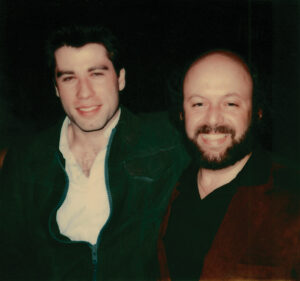
Brian was very encouraging, and George was very receptive to my ideas too. I felt encouraged to speak up when I worked with other directors.
The next important director I worked with was Herbert Ross. At the time he was one of the top studio directors. He directed big stars like Peter O’Toole and Barbra Streisand. He was also a choreographer and he was respectful of other artists.
The best way to earn Herbert’s respect was to stand up to him, and I did. Everything was fine between us. I’d show him something and ask what he thought, and he said. “That’s your art. I leave that up to you.”
What is your greatest thrill in the editorial process?
The greatest thrill is when I get an idea. The next greatest thrill is when I try the idea and it works. It’s also a thrill but not as much as when I had the idea. The next greatest thrill is when I show it to the director, and he likes it. The thrill is getting the idea.
You talk in the book about how editing is this melange of other art forms. Is that what drew you to the work?
It’s related to all of these things. Editing is always compared to other things. It’s like choreography. It’s like sculpting in clay, not stone, because you can add back. It’s like architecture in a way, because you have to establish a foundation of the story and build from there, with balance and symmetry and design. It’s like many other things but it is really its own thing.
Are you a proponent of the classic studio-era invisible style?
I don’t think editing necessarily has to be invisible. There are times when the editor is able to contribute to the showmanship of the film.
For instance, the car chase in “The French Connection” (1971) is a fantastic sequence. The editing is not invisible, but at the same time you are so caught up in the moment you are not really aware of it. It’s only in retrospect, you think, “My God, that was fantastic.” Editing is intrinsic to film, to a certain kind of film.
“Mission: Impossible” is a good illustration of that.
There were three major set pieces in the film. One was the embassy where the crew is assassinated. The next one is the CIA and the last one is the train in the tunnel. Before the embassy sequence, there is an earlier scene of an interrogation. It’s cryptic, and I think it is the perfect way to start pictures, that is, raise questions in the
audience’s mind.
I have worked on films the last few years, where I think they were misled by the success of “Star Wars,” using an opening crawl, and thinking it was important to give the audience a lot of information, especially with fantasy films. Studios always seem to think audiences need information in order to understand the world they are about to enter.
I think the best way to start a film is “Mission: Impossible — Ghost Protocol” (2011), where we see a man burst out of a door on a rooftop being chased by people shooting at him. He jumps off the building and (eventually) shoots the assassins coming after him. He checks the documents to make sure they are secure and he turns around the corner and sees a woman, and she shoots and kills him. That is the beginning of the movie.
We used that to stir their curiosity. Once you have the audience wondering what is going on here, you are good. They want to know the answers to these questions. You want to puzzle them without confusing them. Once they are puzzled and want to know the answer, they will stick with you. Later in the film, when [Tom] Cruise breaks out of that prison, we have a flashback that explains who was the guy who burst out of that door in the opening scene.
What was the emotional experience like in writing the book, of delving into your past and reckoning with your life’s work?
I oscillated between thinking these were really good stories and also thinking, “This is the most narcissistic thing a person could do.” As I was writing it, I wasn’t thinking that anybody was ever going to read it. I was just involved in the process of writing it and getting it right. Then when I realized people were going to read it, I had
to go back and look and see if I wrote anything offensive about them.
I learned a lesson that James Comey wrote about Trump. He tried to throw a little bit of shade about Trump, and he ended up throwing as much shade upon himself. I either softened or took out experiences I had with people that were unhappy.
Basically I believe there is no whining on the yacht. I’ve been living on a yacht my whole life. Nobody wants to hear how this guy didn’t listen to me or was rude or insensitive. Nobody in Hollywood escapes insults. The true art form in Hollywood is how to humiliate people.
In the act of rethinking your life and art, is this the career you aspire to or hoped for, or is there a sense of missed opportunities?
I am pretty happy with the life choices I made. I have been married for 45 years. My kids are both working in the business. I have a nice home. I am 74 years old. I don’t know what I would have changed.
Your last credit was “The Mummy” (2017). Are you still seeking work?
We’ll see. I have been approached about a project. Talk is free. We will see what happens.
Patrick Z. McGavin is a Chicago cultural journalist and film critic.


